Geological Significance of the Perrot Spring in Mont Avic Natural Park (NW Alps)
Abstract
:1. Introduction
2. Materials and Methods
3. Geological Setting
4. Results of the Geological Survey
4.1. Bedrock
4.2. Quaternary Succession
5. Main Features of the Perrot Spring
6. Discussion and Conclusions
Author Contributions
Funding
Data Availability Statement
Acknowledgments
Conflicts of Interest
References
- Stevenazzi, S.; Zuffetti, C.; Camera, C.A.S.; Lucchelli, A.; Beretta, G.P.; Bersezio, R.; Masetti, M. Hydrogeological characteristics and water availability in the mountainous aquifer systems of Italian Central Alps: A regional scale approach. J. Environ. Manag. 2023, 340, 117958. [Google Scholar] [CrossRef] [PubMed]
- Viviroli, D.; Weingartner, R. The hydrological significance of mountains: From regional to global scale. Hydrol. Earth Syst. Sci. 2004, 8, 1017–1030. [Google Scholar] [CrossRef]
- Neuman, S.P. Trends, prospects and challenges in quantifying flow and transport through fractured rocks. Hydrogeol. J. 2005, 13, 124–147. [Google Scholar] [CrossRef]
- Grappein, B.; Lasagna, M.; Capodaglio, P.; Caselle, C.; De Luca, D.A. Hydrochemical and isotopic applications in the Western Aosta Valley (Italy) for sustainable groundwater management. Sustainability 2021, 13, 487. [Google Scholar] [CrossRef]
- De Luca, D.A.; Cerino Abdin, E.; Forno, M.G.; Gattiglio, M.; Gianotti, F.; Lasagna, M. The Montellina Spring as an example of water circulation in an Alpine DSGSD context (NW Italy). Water 2019, 11, 700. [Google Scholar] [CrossRef]
- Gizzi, M.; Lo Russo, S.; Forno, M.G.; Cerino Abdin, E.; Taddia, G. Geological and hydrogeological characterization of springs in a DSGSD context (Rodoretto Valley—NW Italian Alps). Appl. Geol. 2020, 3–19. [Google Scholar] [CrossRef]
- De Luca, D.A.; Destefanis, E.; Forno, M.G.; Fratianni, S.; Gattiglio, M.; Masciocco, L.; Menegon, A. Studio interdisciplinare per il monitoraggio e la valorizzazione delle sorgenti della Valle di Susa in previsione di opere a forte impatto ambientale. Convegno Nazionale AIGeo: Ambiente geomorfologico e attività dell’uomo. Risorse rischi e impatti. Torino 28–30 marzo 2007. Mem. Soc. Geogr. Ital. 2009, 87, 189–199. [Google Scholar]
- Forno, M.G.; Gattiglio, M.; Gianotti, F. Geological context of the Becca France historical landslide (Aosta Valley, NW Italy). Alp. Med. Quat. 2012, 25, 125–140. Available online: https://hdl.handle.net/2318/120521 (accessed on 17 August 2023).
- Galleani, L.; Vigna, B.; Banzato, C.; Lo Russo, S. Validation of a vulnerability estimator for spring protection areas: The vespa index. J. Hydrol. 2011, 396, 233–245. [Google Scholar] [CrossRef]
- Sada, D.W.; Pohlman, K.F. Mojave Inventory and Monitoring Network Spring Survey Protocols: Level I and level II. In US National Park Service; Desert Research Institute: Reno, NV, USA, 2003; 32p. [Google Scholar]
- Stevens, L.E.; Schenk, E.R.; Springer, A.E. Springs ecosystem classification. Ecol. Appl. 2021, 31, e2218. [Google Scholar] [CrossRef]
- Ghignone, S.; Balestro, G.; Gattiglio, M.; Borghi, A. Structural evolution along the Susa Shear Zone: The Role of a first-order shear zone in the exhumation of meta-ophiolite units (Western Alps). Swiss J. Geosci. 2020, 113, 17. [Google Scholar] [CrossRef]
- Beltrando, M.; Compagnoni, R.; Lombardo, B. (Ultra-) High-Pressure Metamorphism and Orogenesis: An Alpine Perspective. Gondwana Res. 2010, 18, 147–166. [Google Scholar] [CrossRef]
- Pezzotta, F.; Diella, V.; Guastoni, A. Scandium silicated from the Baveno and Cuasso al Monte NYF-Granites, Southern Alps (Italy): Mineralogy and genetic inferences. Am. Mineral. 2005, 90, 1442–1452. [Google Scholar] [CrossRef]
- Tartarotti, P.; Benciolini, L.; Monopoli, B. Brecce serpentinitiche nel massiccio ultrabasico del Monte Avic (Falda Ofiolitica Piemontese): Possibili evidenze di erosione sottomarina. Atti Ticinensi Sci. Terra 1998, 7, 73–86. [Google Scholar]
- Fontana, E.; Panseri, M.; Tartarotti, P. Oceanic relict textures in the Mount Avic serpentinites, Western Alps. Ofioliti 2008, 33, 105–118. [Google Scholar]
- Fontana, E.; Panseri, M.; Tartarotti, P. Geological map of the Mount Avic Massif (Western Alps Ophiolites). J. Maps 2015, 11, 126–135. [Google Scholar] [CrossRef]
- Dal Piaz, G.V.; Gianotti, F.; Monopoli, B.; Pennacchioni, G.; Tartarotti, P.; Schiavo, A. Note Illustrative Della Carta Geologica d’Italia Alla Scala 1:50.Foglio 091 “Chatillon”; ISPRA: Rome, Italy, 2010; 152p. [Google Scholar]
- Akulov, N.I.; Rubtsov, M.N. Deposits from the Glacial Age at Lake Baikal. Earth Environ. Sci. 2011, 14, 329–362. [Google Scholar] [CrossRef]
- Castello, P. La “via del rame” tra la miniera di Hérin e lo stabilimento metallurgico di Perrot nel vallone del Torrente Chalamy in comune di Champdepraz (Valle d’Aosta -Italia). Rev. Valdôtaine Hist. Nat. 2020, 74–75, 55–92. [Google Scholar]
- Lucianetti, G.; Penna, D.; Mastrorillo, L.; Mazza, R. The Role of Snowmelt on the Spatio-Temporal Variability of Spring Recharge in a Dolomitic Mountain Group, Italian Alps. Water 2020, 12, 2256. [Google Scholar] [CrossRef]
- Clow, D.W.; Schrott, L.; Webb, R.; Campbell, D.H.; Torizzo, A.; Dornblaser, M. Ground water occurrence and contributions to streamflow in an alpine catchment, Colorado Front Range. Groundwater 2003, 41, 937–950. [Google Scholar] [CrossRef]
- Penna, D.; Engel, M.; Mao, L.; Dell’Agnese, A.; Bertoldi, G.; Comiti, F. Tracer-Based Analysis of Spatial and Temporal Variations of Water Sources in a Glacierized Catchment. Hydrol. Earth Syst. Sci. 2014, 18, 5271–5288. [Google Scholar] [CrossRef]
- Celico, P. Prospezioni Idrogeologiche; Liguori: Napoli, Italy, 1986; Volume 2, 536p. [Google Scholar]
- Castiglioni, G.B. Geomorfologia; UTET: Torino, Italy, 1979; 436p. [Google Scholar]
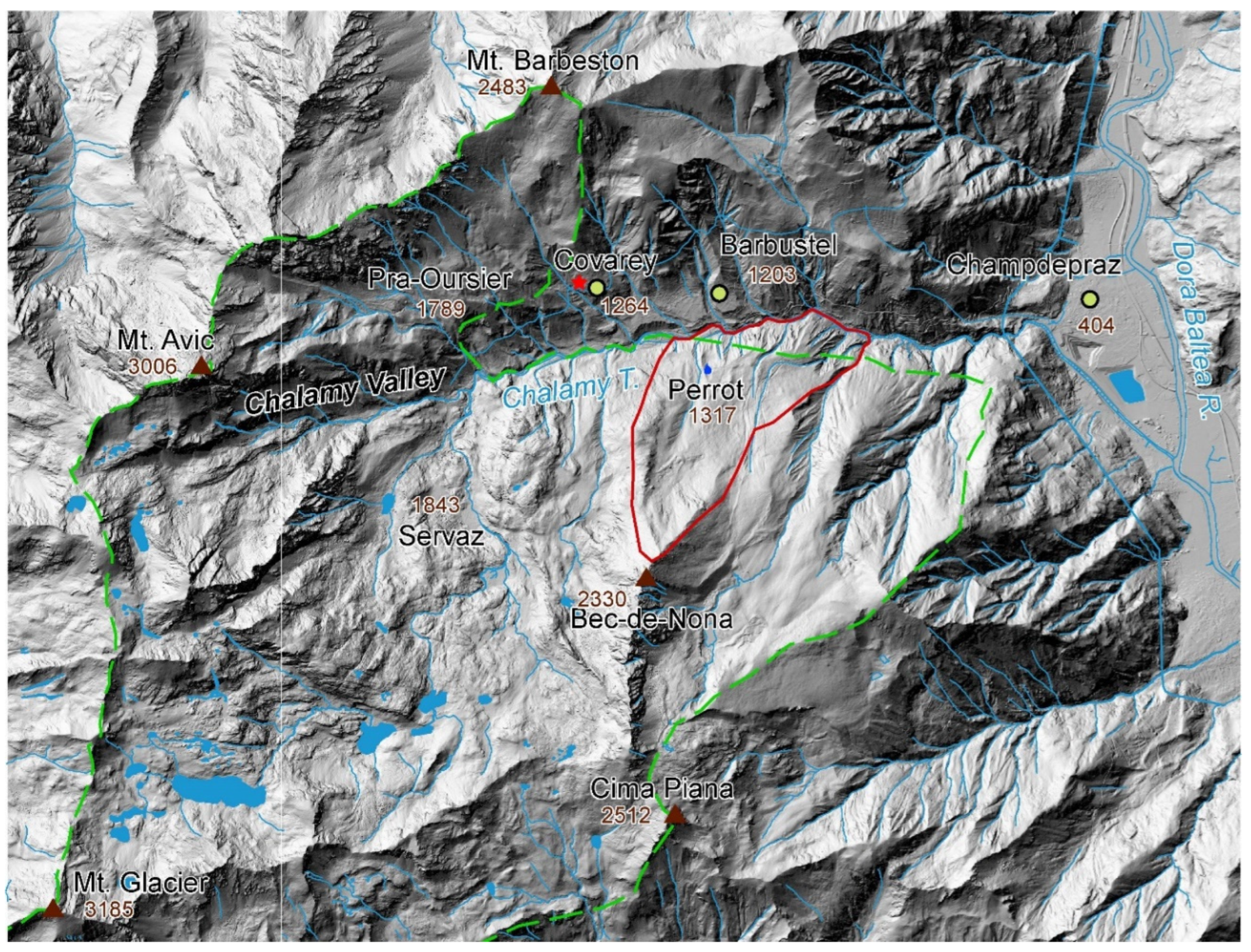
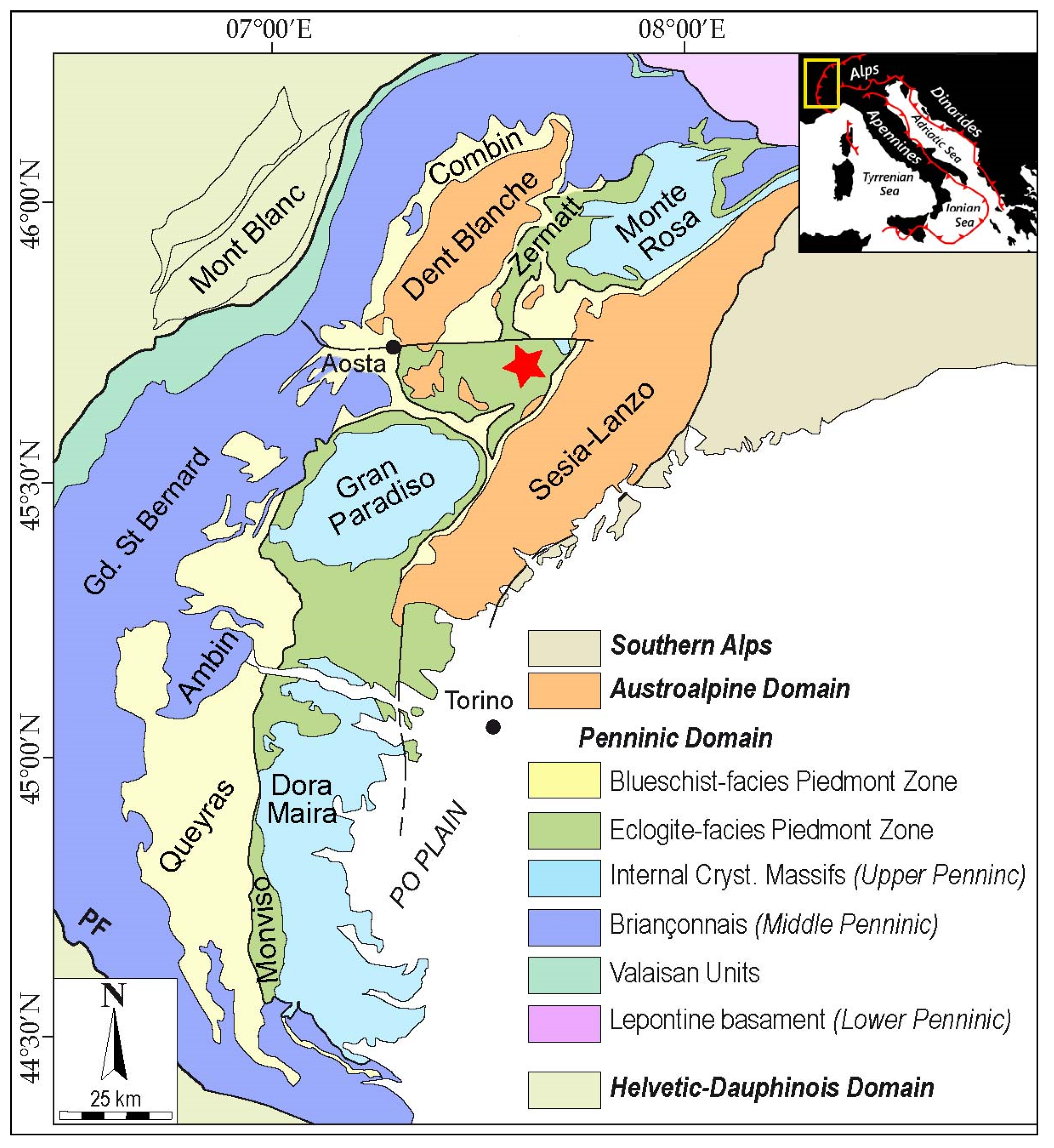
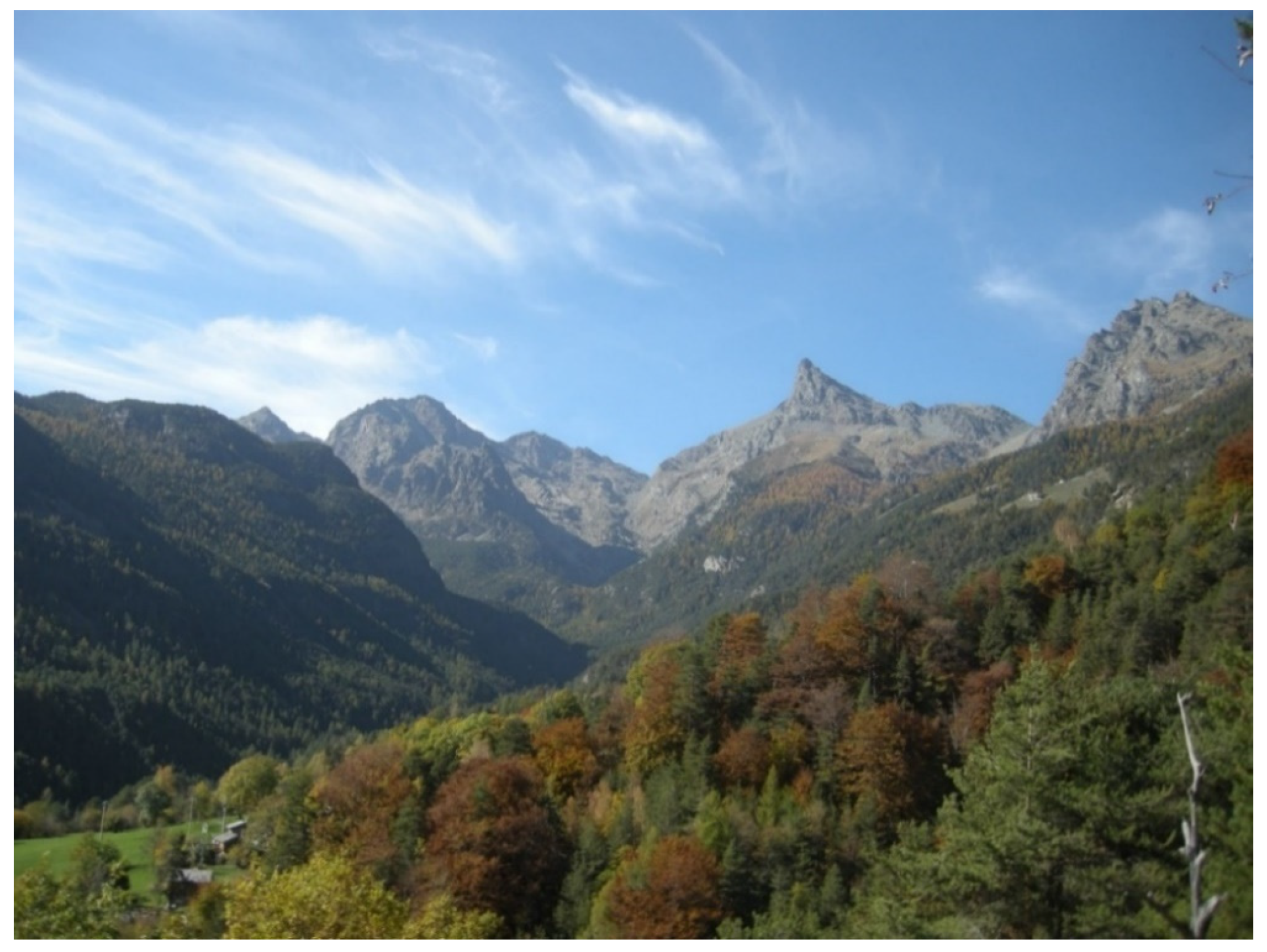
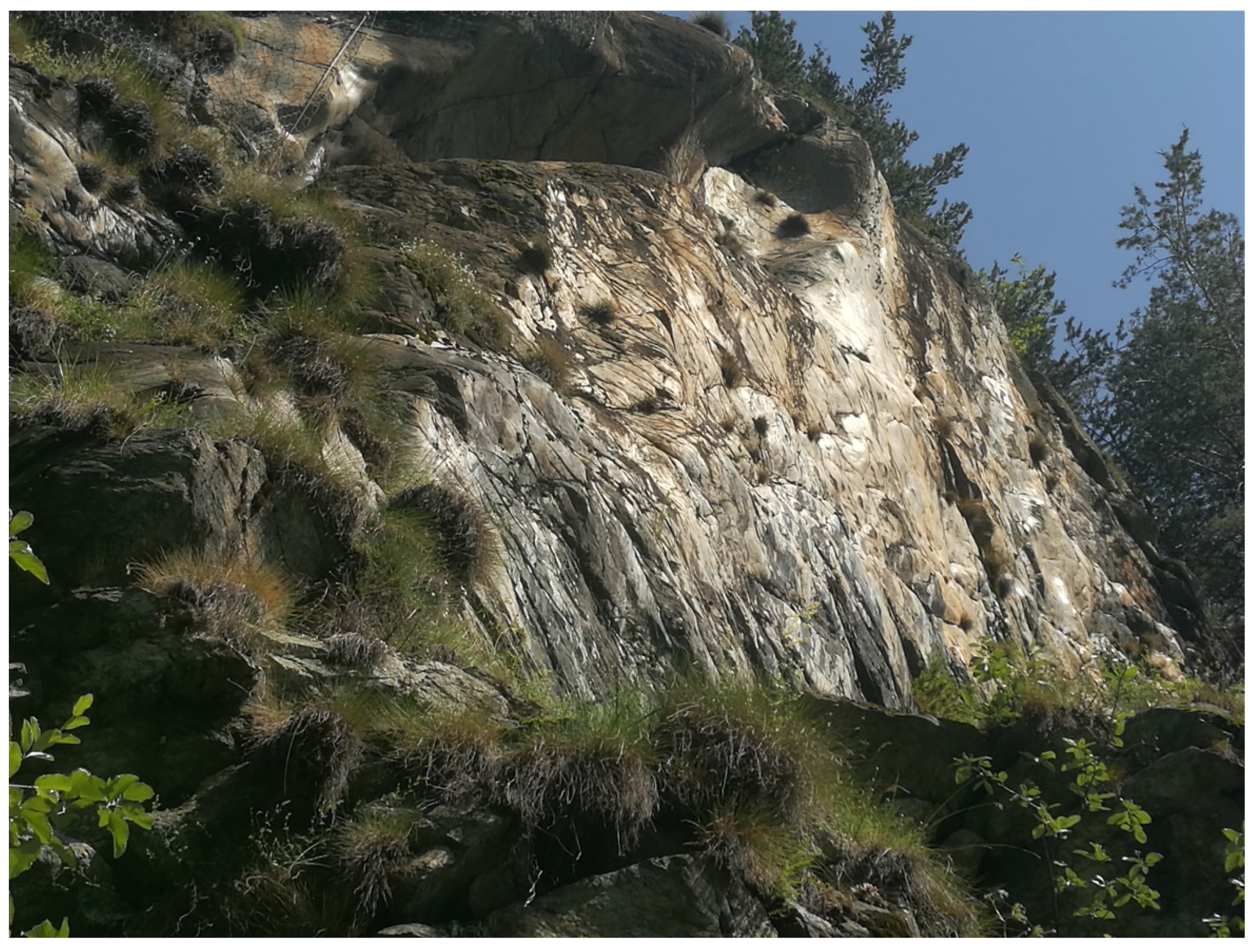
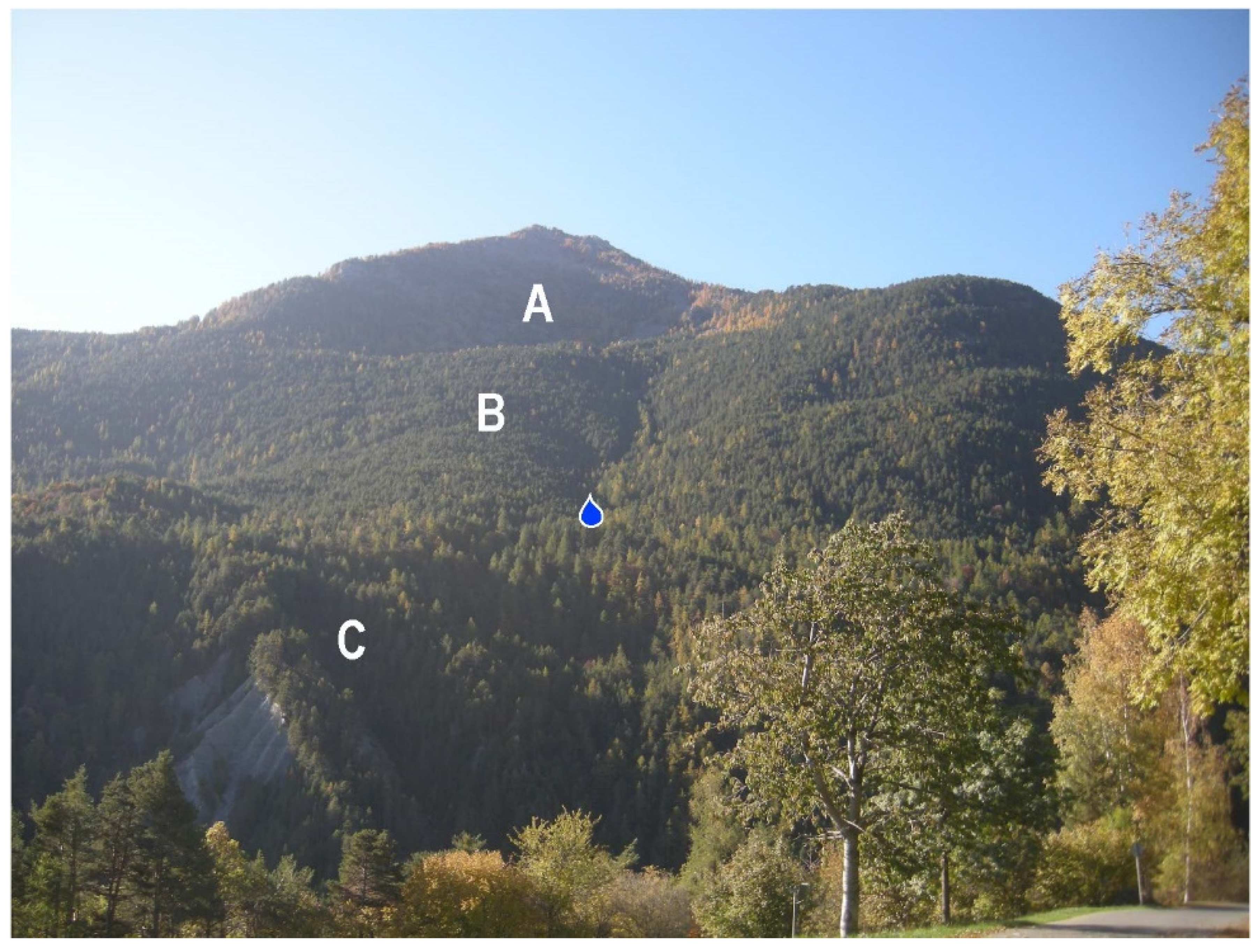
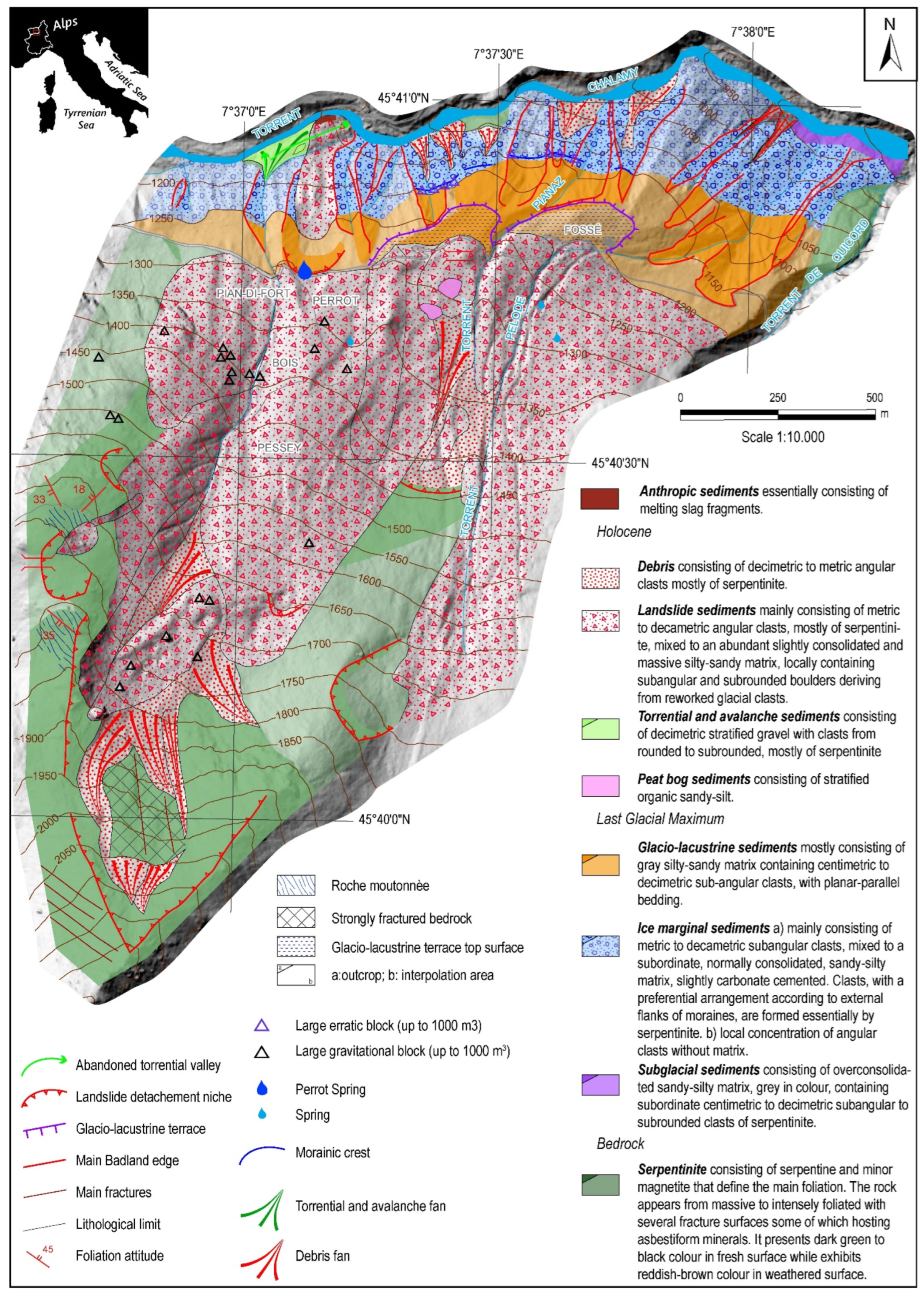
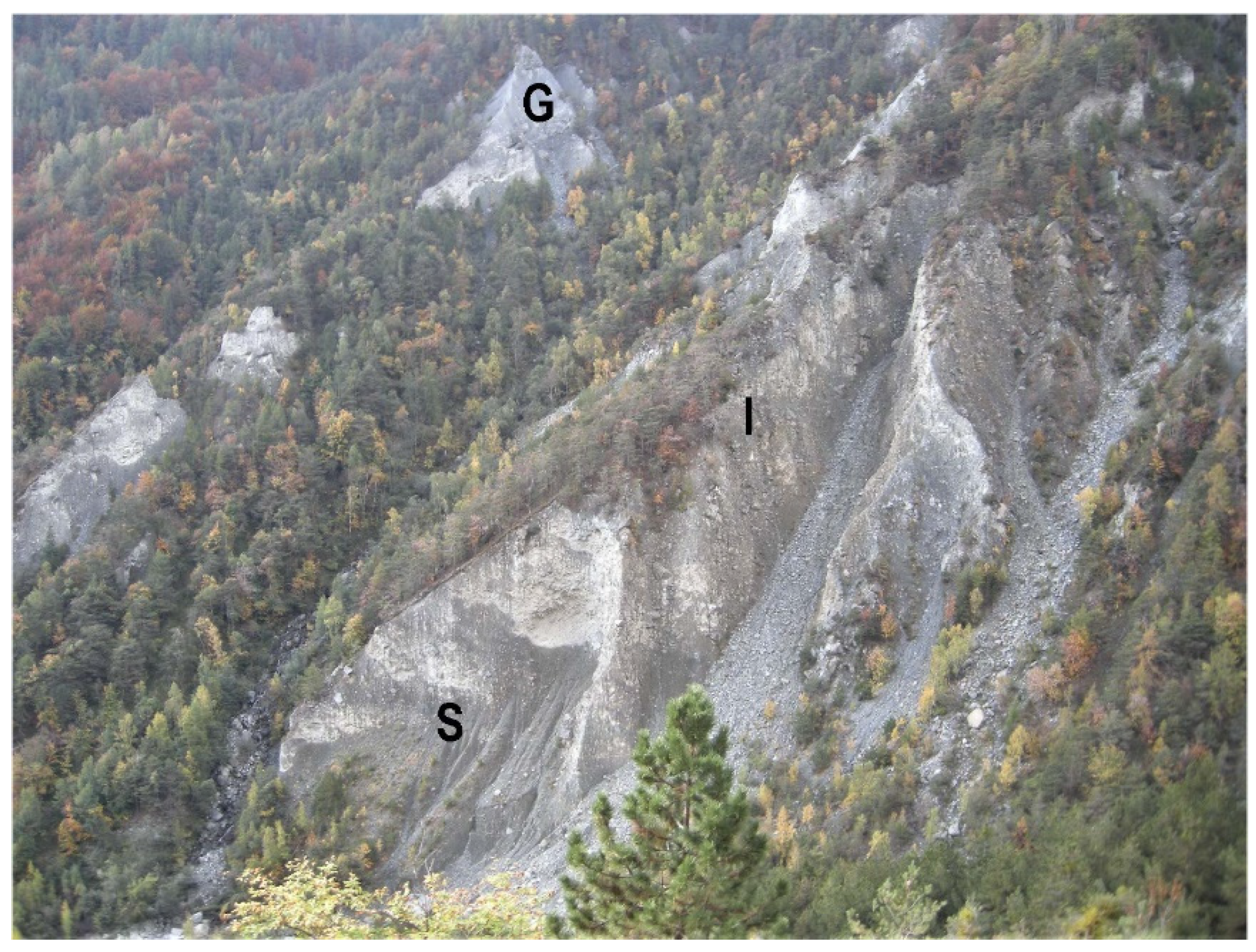
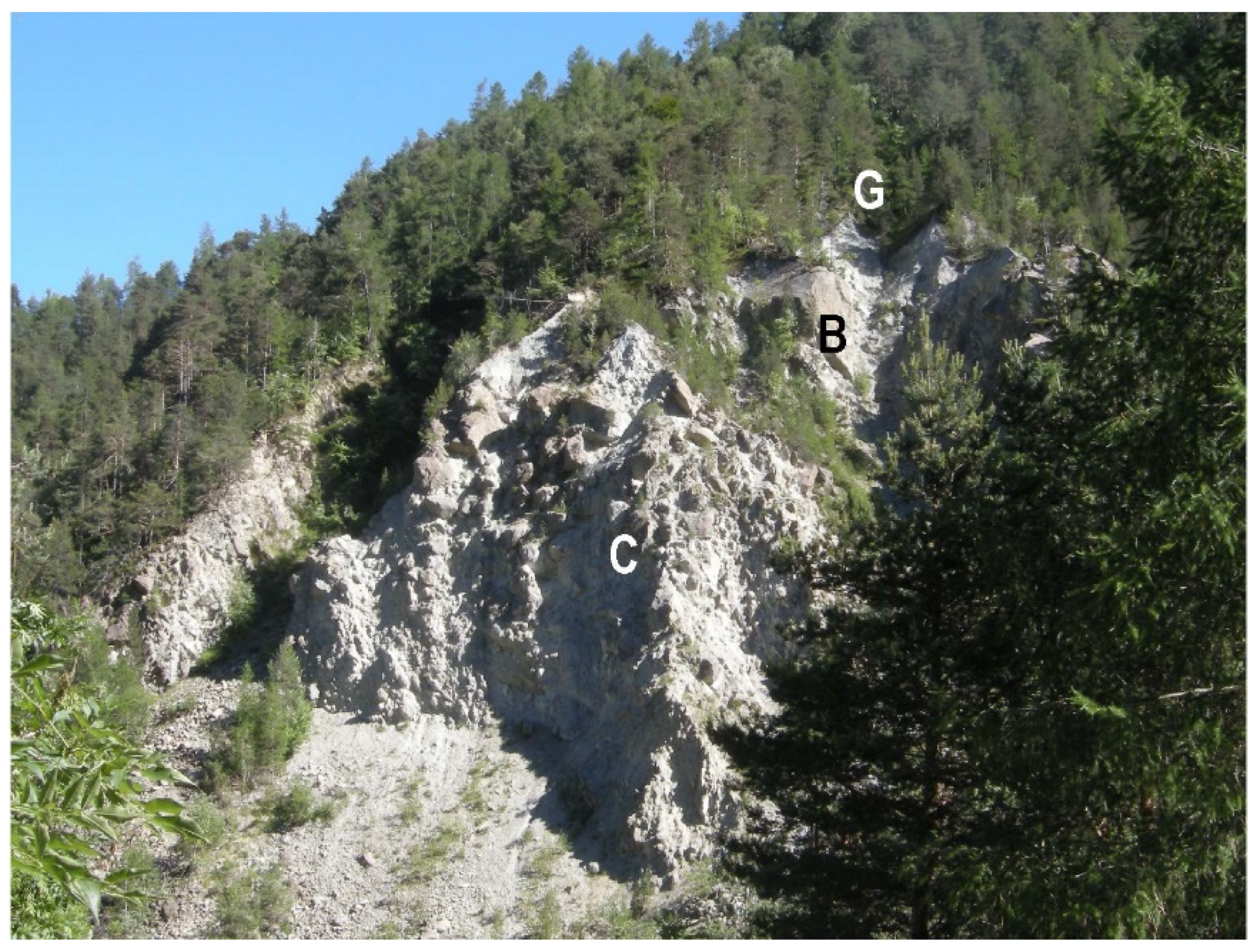
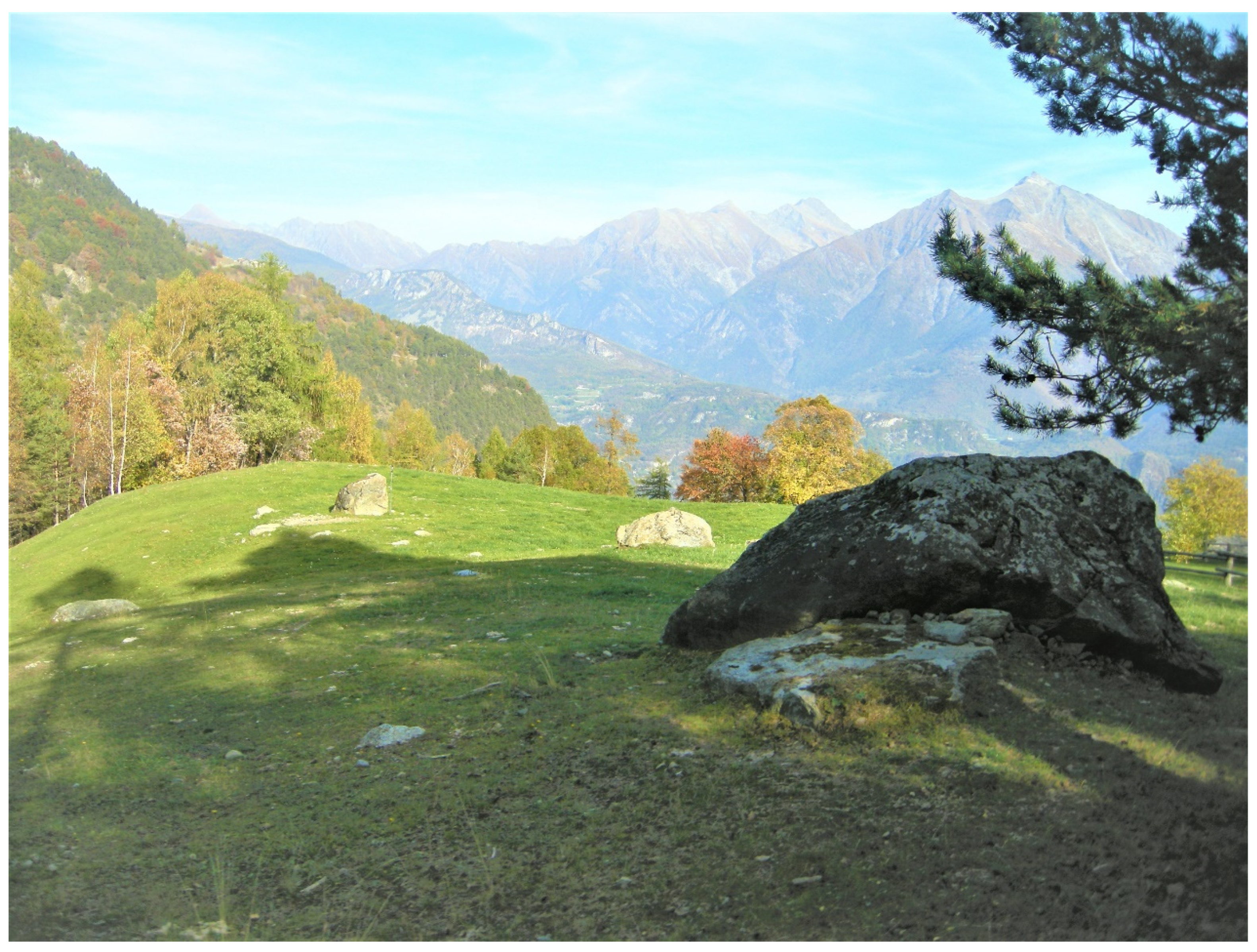
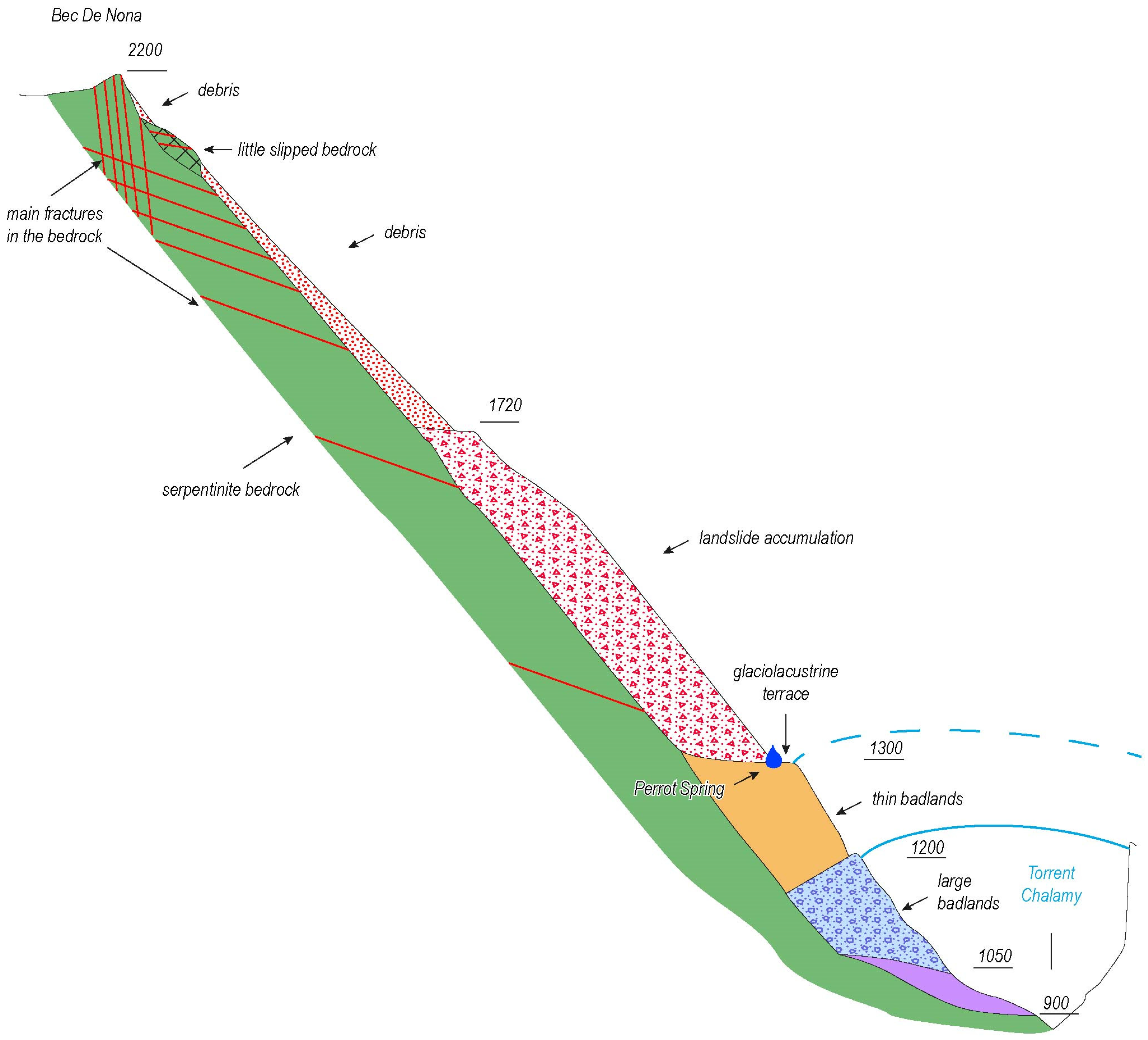
Disclaimer/Publisher’s Note: The statements, opinions and data contained in all publications are solely those of the individual author(s) and contributor(s) and not of MDPI and/or the editor(s). MDPI and/or the editor(s) disclaim responsibility for any injury to people or property resulting from any ideas, methods, instructions or products referred to in the content. |
© 2023 by the authors. Licensee MDPI, Basel, Switzerland. This article is an open access article distributed under the terms and conditions of the Creative Commons Attribution (CC BY) license (https://creativecommons.org/licenses/by/4.0/).
Share and Cite
Forno, M.G.; Gattiglio, M.; Ghignone, S.; De Luca, D.A.; Santillan Quiroga, L.M. Geological Significance of the Perrot Spring in Mont Avic Natural Park (NW Alps). Water 2023, 15, 3042. https://doi.org/10.3390/w15173042
Forno MG, Gattiglio M, Ghignone S, De Luca DA, Santillan Quiroga LM. Geological Significance of the Perrot Spring in Mont Avic Natural Park (NW Alps). Water. 2023; 15(17):3042. https://doi.org/10.3390/w15173042
Chicago/Turabian StyleForno, Maria Gabriella, Marco Gattiglio, Stefano Ghignone, Domenico Antonio De Luca, and Luis Miguel Santillan Quiroga. 2023. "Geological Significance of the Perrot Spring in Mont Avic Natural Park (NW Alps)" Water 15, no. 17: 3042. https://doi.org/10.3390/w15173042
APA StyleForno, M. G., Gattiglio, M., Ghignone, S., De Luca, D. A., & Santillan Quiroga, L. M. (2023). Geological Significance of the Perrot Spring in Mont Avic Natural Park (NW Alps). Water, 15(17), 3042. https://doi.org/10.3390/w15173042





